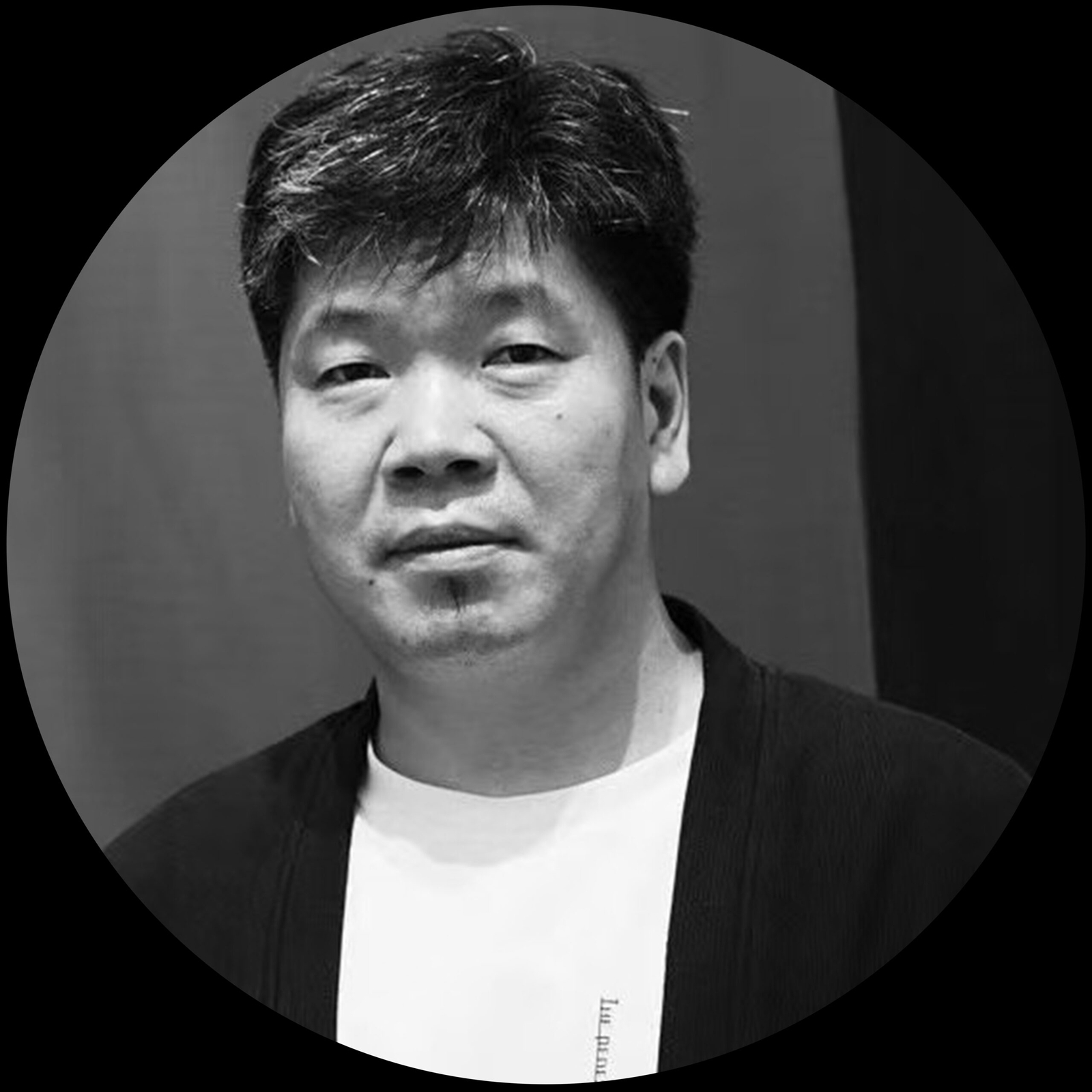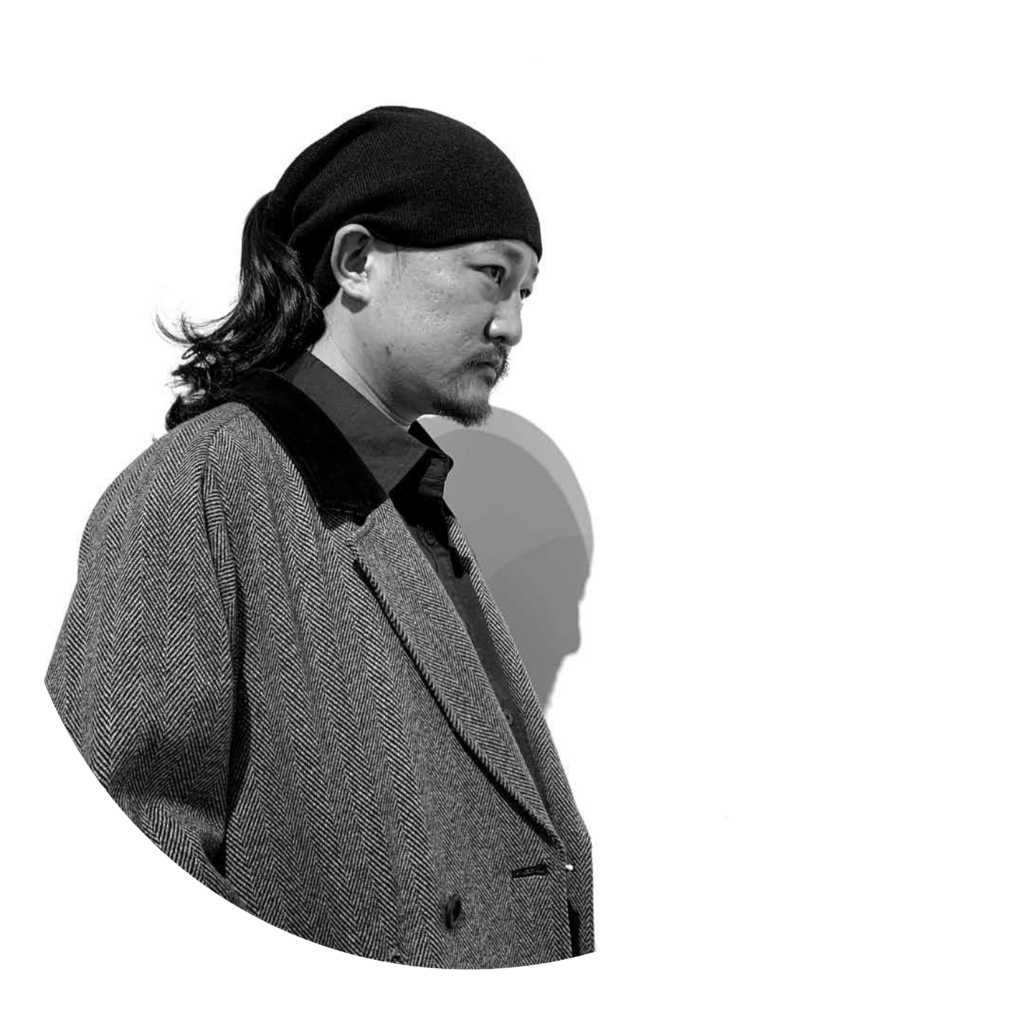
田萌 Tian Meng
批评家,策展人 Critic, Curator
文/田萌 2025.09
在时间的废墟上 ——关于王彦鑫的“西北叙事”
2004年6月至7月,王彦鑫先后去了青海省的海晏县的金银滩、刚察县的一处被遗弃的劳改农场和共和县的一处沙漠区域。在这里分别创作了《金银滩》《在那遥远的地方》《沙珠玉》三部行为影像作品——他将其称之为“西北叙事”。“西北叙事”在王彦鑫的艺术生涯中有着重要的意义。这一重要性主要体现为,他开始结构性地思考与介入空间。他以行为艺术的方式介入,以影像的方式表现。行为艺术在空间中展开,不过,这一表述中空间往往是一般性的,即空间并不为行为本身提供更多有意义的信息。很明显,在“西北叙事”中,王彦鑫很明确地用身体介入到具体的空间,而这些空间的信息也是其艺术叙事不可或缺的部分。
行为艺术不只是一种通过一定的行为完成内在的体验,或者通过一定的动作完成一个观念的表达,也可以是艺术家通过对特定现实或者历史空间的回应揭示出一种新的空间经验。王彦鑫以行为艺术的方式对特定空间的回应在更早的作品中就已显现出来。比如2018年在日本福岛核泄漏的空间中创作的《当我们再次相遇》,2021年在一段废弃的滇越铁路的隧道中完成的《百年》《一千零一次光》等。在过去,这类作品往往是因为参与某个项目而发生并进入这些空间。他总是能敏锐地捕捉这些空间及其信息,然后以独特的方式介入其中——或诗意、或幽默、或庄严、或荒诞。在越来越熟悉一种介入空间的方式之后,王彦鑫开始思考一个问题,空间于他而言意味着什么?他该思考什么样的空间?于是,他不再满足于在他人的项目中发现与介入空间,而是要主动地发现与介入于自己有特别意义的空间。“西北叙事”正是他自觉地研究与介入空间的结果。
所谓的自觉,我们可以从两个方面来理解:
其一是关于“西北”与自我经验的自觉关联。王彦鑫对行为艺术与身体的认识最处源自于知识和观念。知识与观念在帮助他认识身体及其知觉系统时,也在另一方面使其逐步忘却自身的经验。尤其,近年来人工智能技术的迅猛发展,身体不仅被概念所剥夺,而且也被过载的信息所占领。身体的知觉能力正在衰退。当他意识到这一点,一种过去的甚至带有地方性的经验开始被唤醒。他是甘肃兰州人,甘肃与青海一样都被作为“西北”叙事的一部分。在这些叙事中,西北不仅仅是地理意义上的西北,更是文化与政治意义上的。虽然他从来不以地方性定义个人性,也不打算这么干,但是现在他有了一种冲动,他想要以个人性的方式介入到对地方的表达,将对“西北”的抽象表述化作具身化的经验。他并不是回到狭隘的地方性,而是自觉地去揭示出宏大的西北叙事的异质性。
其二是对空间的结构性思考。中国上世纪五十年代曾在金银滩草原境内建立第一个核武器研制基地。这是二战结束之后冷战开始时的产物,因而在冷战结束之后的1995年5月15日全面退役。中国的原子弹和氢弹都在这里研制并试验成功,这对冷战时期的中国,乃至当时的世界格局都有着重要的意义。基于这一意义,现在这里被作为原子城遗址向公众开放,并被作为重要的爱国主义教育示范基地。似乎谁都不会怀疑原子城作为一段与国家命运息息相关的历史地点而被铭记的合法性。什么应该被铭记?什么应该被遗忘?带着这样的提问,王彦鑫将目光投向了一处位于刚察县和德令哈地区的劳改农场。这是一个与原子城几乎同时期建设的国营农场。在曾是一片荒芜的土地上开发农场,这既是为了扩大农业生产的举措,也具有像原子城一样的政治意义。在农场内,有专家和工人,但真正的劳动主力则是犯人、劳教分子和刑满留场就业人员——统称三类人员。随着历史的变迁,这些农场也逐步退出历史舞台。很快,这些农场就开始像风卷残云般从这片土地上消失了,即便仍有断壁残垣,也往往被禁止靠近。仿佛这是一个不值得被铭记的地方。《在那遥远的地方》所介入的农场与农场监狱,正在回到它们被建设之前的荒芜之中。正是这一荒芜,让王彦鑫将空间转向了沙漠空间。从原子城、劳改农场再到沙漠构成了“西北叙事”的三重结构性空间,且呼应着记忆、消失与永恒。
在这种结构性的思考与表达中,王彦鑫试图在三重空间中建立它们之间的关联,或者提示它们所带给我们新的经验。其中,时间是一个不断被提示的主题。在三部作品中,我们都可以看到他胸前挂了一个停滞的钟表,而他又在尝试调试着钟表的时间——这是一个荒谬的动作。在一个无法校准的时间刻度中,时间是错位的,也是混乱的。他在《金银滩》的自我阐述中说:“仿佛在这个空间,时间既未前进,也未后退,而是永远停留在某个不可触及的瞬间,既无法改变,又无法忘记。这里没有清晰的时间线,也没有明确的起点与终点,共同构成了一幅悬而未决的画面,是人类在历史的洪流中无法摆脱的痛苦与焦虑。”线性时间被打断,另一种时间感在王彦鑫对空间的仪式化介入中被激发。这不仅是由钟表无法校准的时间所提示,更是由王彦鑫所采用的混杂的历史符号、拟仿的巫术仪式以及荒诞的表演所引发。复杂历史的符号引导对历史的记忆,拟仿的巫术仪式仿佛将人带入一种超验的时间,又或是像招魂术一般让隐匿在废墟中的幽灵显现,而这一切在荒诞的表演中让一切都变得毫无逻辑,荒诞不经。这是荒诞感,让那些确定的空间意义不再确定,也不再稳定——新的意义将在既有意义的瓦解中显现。
“西北叙事”是在时间的废墟上展开的一次结构性的表达。由此,王彦鑫不仅开始主动选择空间,而且将个体经验与对象空间进行关联性思考,甚至将对象空间纳入到个体经验之内。无论是原子城遗址、劳改农场以及沙漠,这些看似遥远且又宏大的空间主题都是在他自觉地思考“西北”的个体经验时才被激活的。如果说,王彦鑫的“西北叙事”是一次认识行动上的转变的话,那么这一认识的转变一定程度上扩展了他对个体性及其意义的理解——个体是一个持续与外部世界互动与变动的结果,即便这个外部世界是宏大的、遥远的与模糊的。或许,“西北叙事”并不是他有关西北创作的终篇,而是开篇。
On the Ruins of Time — On Wang Yanxin’s “Northwest Narrative”
From June to July 2004, Wang Yanxin traveled across several sites in Qinghai Province — the nuclear testing base of Jinyintan in Haiyan County, an abandoned labor reform farm in Gangcha County, and a desert area in Gonghe County. There, he created three performance-video works: Jinyintan, In That Distant Place, and Shazhuyu, which together he calls his “Northwest Narrative.”
The “Northwest Narrative” holds crucial significance in Wang Yanxin’s artistic career. It marks the moment when he began to structure his engagement with space — to think and act upon it in an architectural, conceptual way. He intervenes through performance and expresses through video. In performance art, the body unfolds within space, yet in many such practices, space is treated as a neutral background, offering little meaningful information to the behavior itself. In Wang’s “Northwest Narrative,” however, space becomes inseparable from the narrative. His body enters specific, historically charged locations whose spatial information constitutes an essential part of his art’s meaning.
Performance art, for Wang, is not merely a series of acts leading to inner experience, nor simply a gesture for the expression of an idea. It can also be an artist’s response to specific realities or historical spaces, revealing new forms of spatial experience. This approach was already visible in his earlier works — When We Meet Again (2018), created within the nuclear exclusion zone in Fukushima, and Centenary and 1001 Lights (2021), both performed in an abandoned tunnel along the Yunnan–Vietnam Railway. In the past, these works were often occasioned by particular projects that led him into such sites. Yet Wang consistently demonstrated a rare sensitivity to these environments, capturing their atmosphere and meaning, and intervening in poetic, humorous, solemn, or absurd ways. As he became more familiar with such spatial engagements, he began to ask a deeper question: What does space mean to me? What kind of space should I think about?
No longer content to enter spaces defined by others’ projects, Wang set out to discover and intervene in spaces that hold personal meaning. The “Northwest Narrative” is the result of this conscious turn — a self-aware exploration and study of space.
This self-awareness can be understood in two dimensions:
First, a recognition of the link between the Northwest and personal experience.
Wang’s early understanding of performance art and the body stemmed from conceptual and theoretical learning. While knowledge and theory helped him analyze the body and its perceptual systems, they also led to a gradual estrangement from his own embodied experience. In the current era, dominated by artificial intelligence and information overload, the body has been stripped of its agency — overwhelmed by data and abstraction, its sensory capacities are in decline. Realizing this, Wang began to reawaken a sense of locality and memory long buried within him.
Born in Lanzhou, Gansu — part of the broader cultural and political construct of “the Northwest” — Wang does not seek to define his identity through regionalism. Yet he feels compelled to re-engage with place through a personal lens, to transform the abstract notion of “Northwest” into embodied experience. This is not a retreat into parochial localism, but an attempt to expose the heterogeneity within the grand narrative of the Northwest.
Second, a structural reflection on space.
In the 1950s, China built its first nuclear weapons research base on the Jinyintan grasslands. This was a product of the early Cold War — and after the Cold War ended, the site was officially decommissioned in May 1995. Both China’s first atomic and hydrogen bombs were developed and tested there, marking an event of great historical and geopolitical significance. Today, the site has been preserved as a patriotic education base, widely accepted as a legitimate locus of national memory.
But what should be remembered? And what should be forgotten?
With these questions, Wang turned his gaze to a state-run labor reform farm located between Gangcha County and Delingha — a site built during the same historical period as the nuclear base. The farm, carved out of desolate land, was meant to increase agricultural production, but it also carried strong political meaning. Within it were experts and workers, but the main labor force consisted of prisoners, re-education laborers, and those who remained after serving their sentences — collectively called the “three categories of personnel.” Over time, these farms disappeared from the landscape like dust in the wind, leaving only ruins, often sealed off and deemed unworthy of remembrance.
In That Distant Place was filmed at such a farm and its adjacent prison, now reclaimed by desolation — returning to the barren state that preceded its construction. It was this emptiness that led Wang to shift his focus toward the desert. From the nuclear base to the labor camp and then to the desert, the “Northwest Narrative” unfolds across three structural spaces — each echoing themes of memory, disappearance, and eternity.
Through this structural thinking, Wang attempts to connect these three spaces and the experiences they produce. A recurring theme across the trilogy is time. In each work, he wears a stopped clock on his chest, attempting — absurdly — to adjust its time. Within an uncalibrated timescale, time itself becomes dislocated and chaotic. As Wang reflects in his statement for Jinyintan:
“In this space, time neither moves forward nor backward. It remains suspended at an unreachable moment — unchangeable, unforgettable. There is no clear timeline, no definite beginning or end. Together they form an unresolved image — the human struggle with the inescapable pain and anxiety of history.”
Linear time is disrupted. Another temporal sense emerges through Wang’s ritualized interventions into space — evoked not only by the broken clock but also by his hybrid use of historical symbols, mock-ritual gestures, and absurd performance. The complex historical references summon memory; the pseudo-magical rituals invoke a transcendent or ghostly temporality; and the absurd actions dissolve logic altogether. Through absurdity, the fixed meanings of space collapse, allowing new meanings to emerge from the ruins of the old.
The “Northwest Narrative” thus becomes a structural expression built upon the ruins of time. Wang not only begins to consciously choose his spaces but also to think relationally — linking personal experience to external, objective environments and even incorporating them into his inner world. Whether the site is a nuclear city, a labor camp, or a desert, these monumental yet distant spaces become active only through Wang’s self-aware reflection on the Northwest as a field of lived experience.
If Wang’s “Northwest Narrative” represents a shift in his mode of artistic cognition, it also expands his understanding of individuality and its meaning. The individual, in his view, is not a closed entity but a dynamic result of continuous interaction with the external world — even when that world is vast, distant, or blurred.
Perhaps, then, the “Northwest Narrative” is not the conclusion of Wang Yanxin’s work on the Northwest, but rather its beginning.
// 最近新作Recent Post
// 分类Categories

1988年生于甘肃兰州,2013年毕业于四川美术学院新媒体系,现工作生活于成都,任教四川文化艺术学院,副教授。
Wang Yanxin, born in 1988 in Lanzhou, Gansu, China. graduated from Sichuan Fine Arts Institute in 2013. Since 2012, he has been engaged in multimedia artistic creation based on performance art. He currently lives and works in Chengdu and is a professor at Sichuan Conservatory of Culture and Arts.
- Chengdu, Sichuan, China
- +86 15215015022
订阅Newsletter
Copyright by wangyanxin.com. 版权所有.

-1.png)
